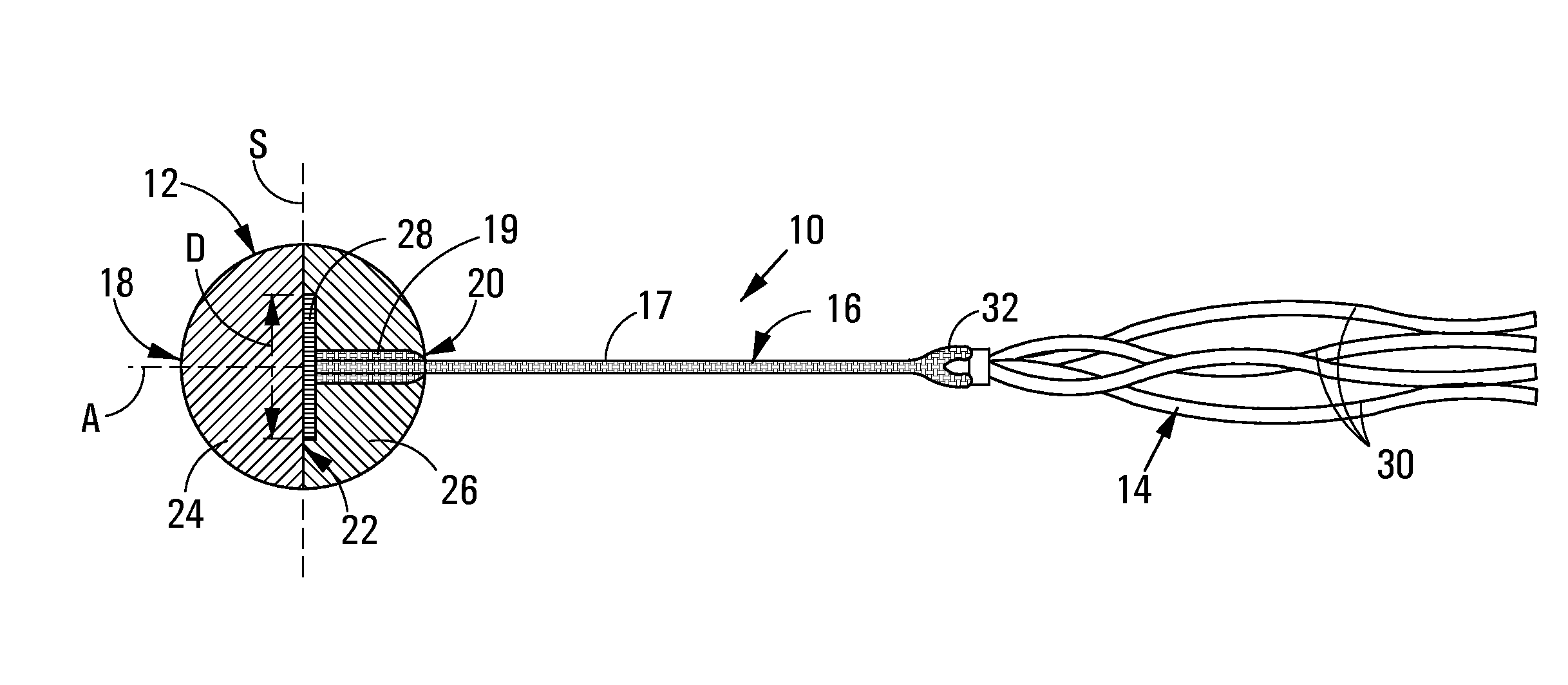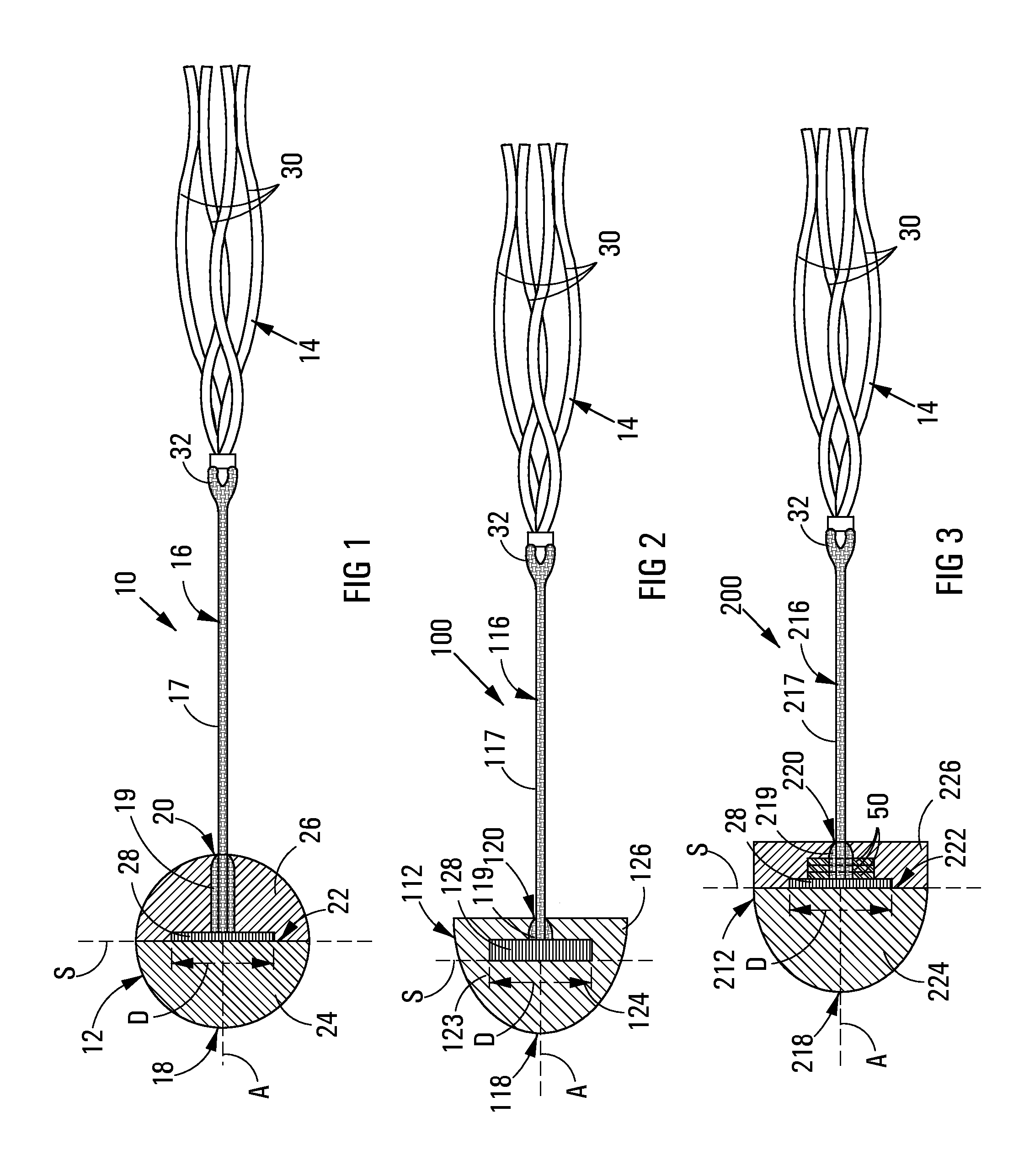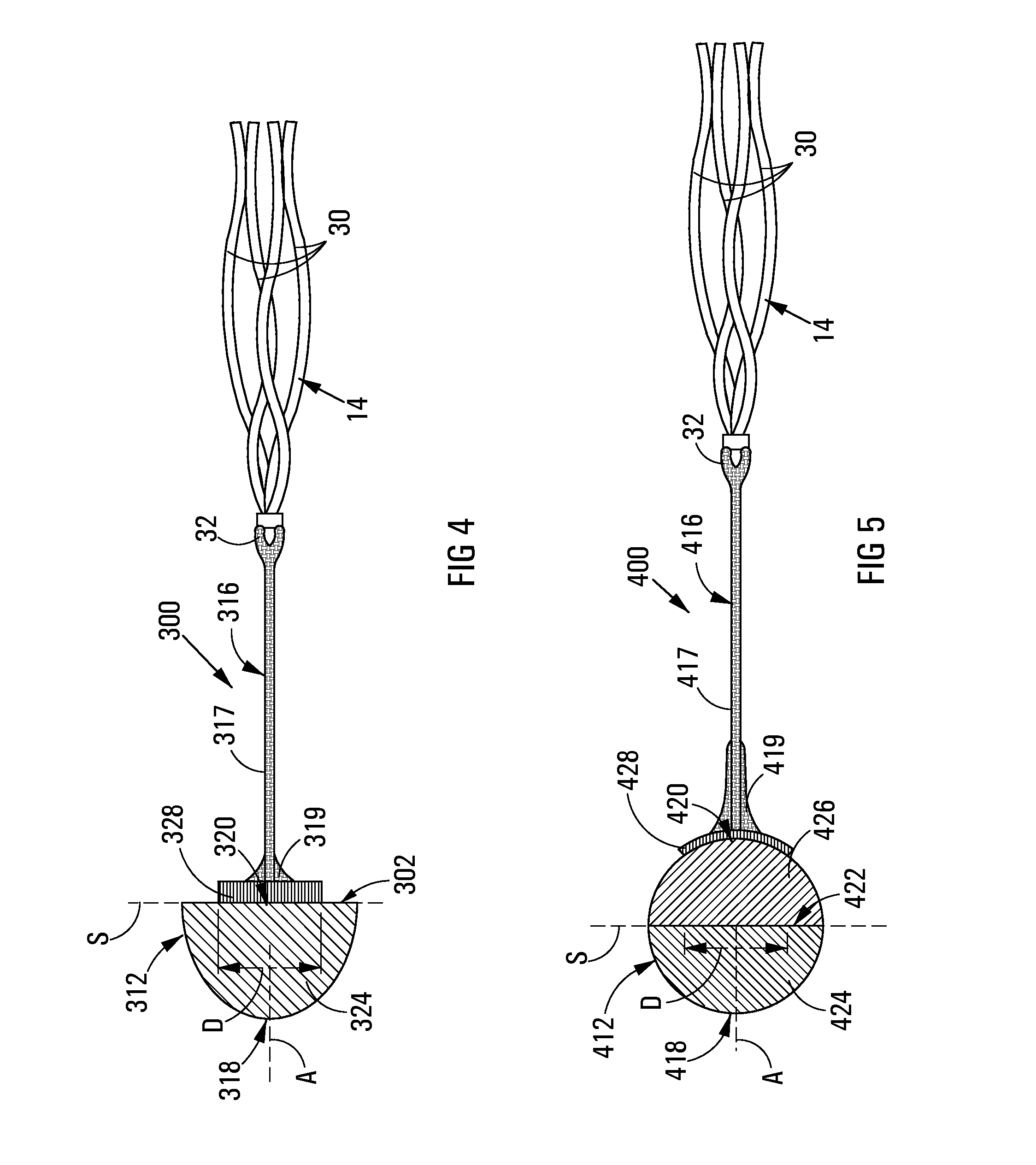Streamer ball
a streamer ball and ball technology, applied in the field of streamers, can solve the problems of streamer ball interference, streamer ball destruction relatively quickly, bats in sets of bats and balls costing a lot of money, and the distance that the ball can travel effectively reduced
- Summary
- Abstract
- Description
- Claims
- Application Information
AI Technical Summary
Benefits of technology
Problems solved by technology
Method used
Image
Examples
second embodiment
[0053]With reference to FIG. 2 of the drawings, a streamer ball in accordance with the invention is designated generally by the reference numeral 100. The streamer ball 100 is similar to the streamer ball 10, with a difference being the configuration of the impact body. As such, in FIG. 2, those features of the streamer ball 100 which are the same as and / or similar to those of the streamer ball 10 are designated by the same and / or similar reference numerals.
[0054]The streamer ball 100 includes a solid closed cell, homogeneous EVA foam impact body 112 having a hemispherical shape and a spacer stem 116 having a tail 14 attached thereto. The impact body 112 has a leading end 118 and a trailing end 120. The entire impact body 112 is of the same solid foam material which has a density of between 25 kg / m3 and 35 kg / m3 and which is resiliently compressible. The impact body 112 defines a front compression body part 124 which constitutes the frontal impact zone, and a rear ballast body part ...
third embodiment
[0057]With reference to FIG. 3 of the drawings, a streamer ball in accordance with the invention, is designated generally by the reference numeral 200. The streamer ball 200 is similar to the streamer ball 10, with the only difference being the configuration of the impact body. In FIG. 3, the same as and / or similar reference numerals are used to designate those features of the streamer ball 200 which are the same as and / or similar to those of the streamer ball 10.
[0058]The streamer ball 200 includes an impact body 212 having a leading end 218 and a trailing end 220. The impact body comprises a hemispherical front compression body part 224 which constitutes the frontal impact zone of the impact body and a disc-shaped rear ballast body part 226. The front compression body part is of a solid, closed cell homogeneous EVA foam material having a density of between 25 kg / m3 and 35 kg / m3 and a shore Hardness of not more than 25 on the type A durameter scale. The front compression body part ...
fourth embodiment
[0060]With reference to FIG. 4 of the drawings, a streamer ball in accordance with the invention, is designated generally by the reference numeral 400. The streamer ball 400 is similar to the streamer ball 100, with a difference being that the entire spacer stem is disposed externally of the impact body, with the anchor formation of the spacer stem being secured to a rear side of the impact body. As such, in FIG. 4, those features of the streamer ball 300 which are the same as and / or similar to those of the streamer ball 100 are designated by the same and / or similar reference numerals.
[0061]The streamer ball 300 includes an impact body 312 having a leading end 318 and a trailing end 320. The impact body comprises a hemispherical impact compression body 324 which constitutes the frontal impact zone of the impact body. The compression body 324 is of a solid, closed cell homogeneous EVA foam material having a density of between 25 kg / m3 and 35 kg / m3 and a Shore Hardness of not more tha...
PUM
 Login to View More
Login to View More Abstract
Description
Claims
Application Information
 Login to View More
Login to View More - R&D
- Intellectual Property
- Life Sciences
- Materials
- Tech Scout
- Unparalleled Data Quality
- Higher Quality Content
- 60% Fewer Hallucinations
Browse by: Latest US Patents, China's latest patents, Technical Efficacy Thesaurus, Application Domain, Technology Topic, Popular Technical Reports.
© 2025 PatSnap. All rights reserved.Legal|Privacy policy|Modern Slavery Act Transparency Statement|Sitemap|About US| Contact US: help@patsnap.com



